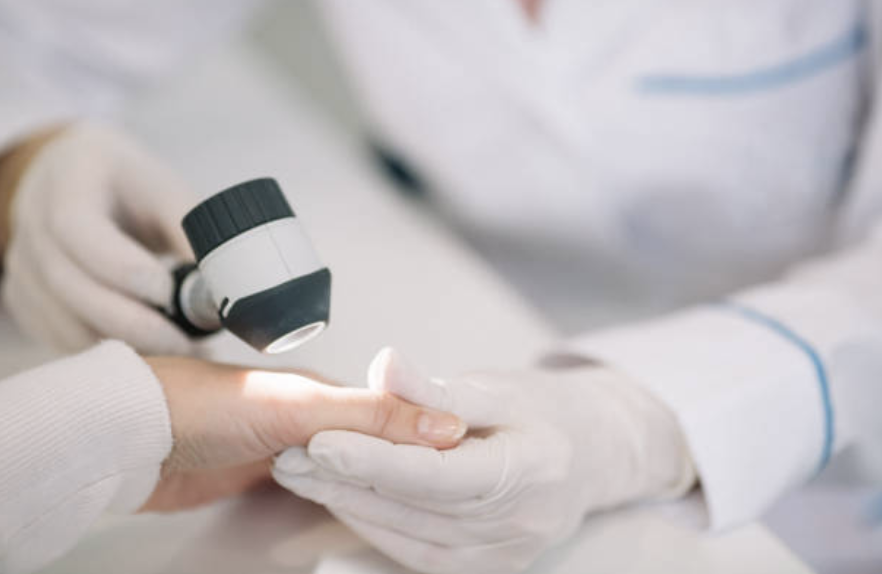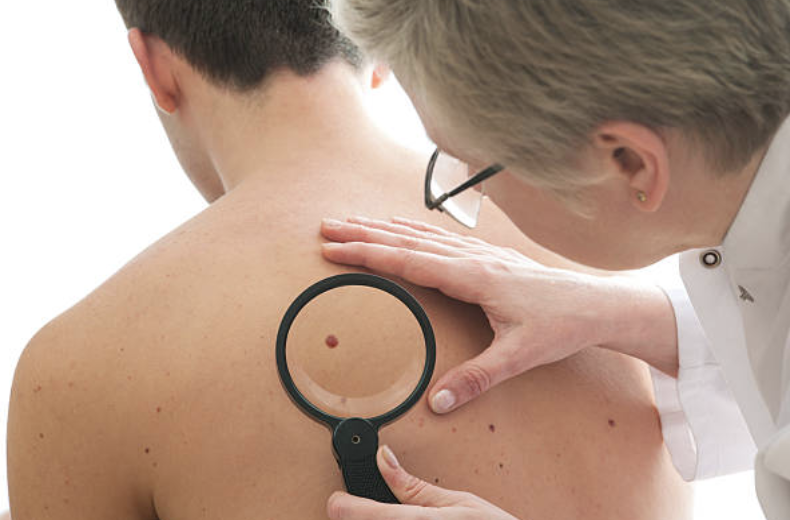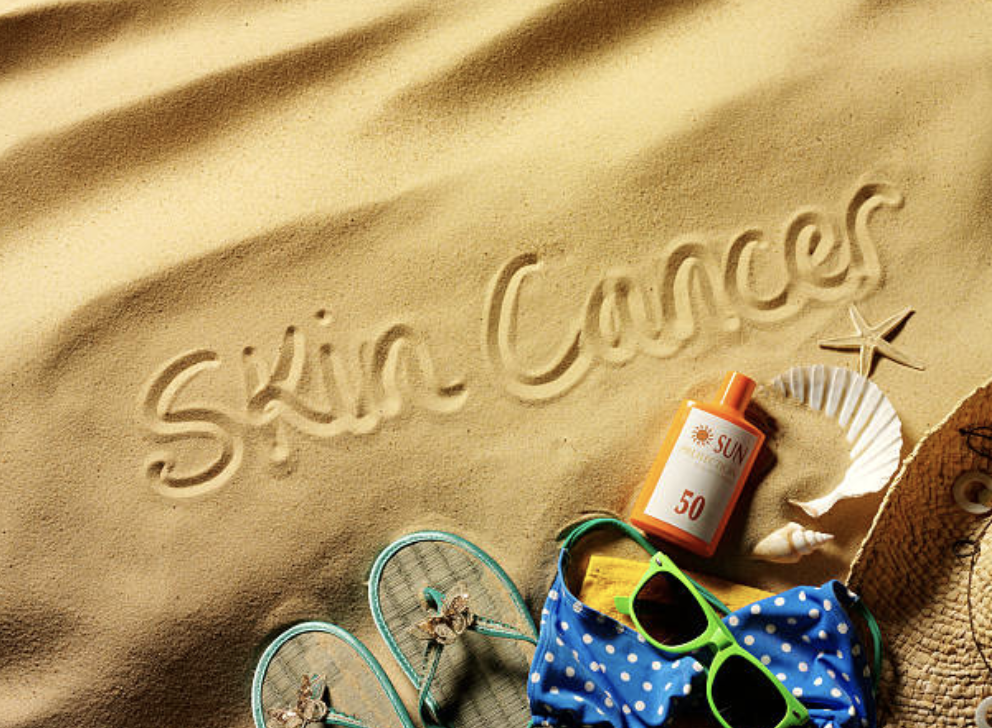
Patient Information

Australia has one of the highest incidences of skin cancer in the world. It is estimated that two out of three Australians will be diagnosed with some form of skin cancer before the age of 70.
Skin cancer and melanomas are caused by overexposure to the UV radiation. In most cases, the UV radiation comes directly from the sun, but sometimes it can occur from overexposure to UV radiation while using a solarium. Skin cancers are abnormal skin cells which grow uncontrollably.
Keratinocytes
These are composed of basal cells and squamous cells and represent about 95% of the epidermis (the top layer of the skin).
Basal cells – these cells make up the lower layer of the epidermis. These cells constantly reproduce and are pushed upwards towards the surface of the skin and pack together tightly to form squamous cells.
Squamous cells – these cells are packed tightly together and form the top layer (the thickest layer) of the epidermis. Squamous cells are formed from old basal cells and they constantly shed as new cells are made.
Melanocytes
These cells are the skins pigment cells. They produce a dark pigment called melatonin which is released when the skin is exposed to the sun. Melatonin gives the skin its colour and causes the skin to tan. Melanoma is formed in the Melanocytes. Melanocytes grow in clusters to form moles which are non-cancerous (benign) spots on the skin sometimes referred to as Naevi.
Skin Cancer
There are three main types of skin cancer and they are named after the
cells they affect.
Squamous cell carcinoma (SCC)
Squamous cell carcinoma (SCC) is a non-melanoma cancer and is the most common type of skin cancer in Australia.
SCC are the least aggressive form of skin cancer.
SCC are commonly found in areas with high exposure to the sun such as the face, neck, head and shoulders and the lower arms and legs.
SCC tends to grow slowly over time and tends to stay contained to a localised area and rarely spreads.

The earlier a SCC is detected the easier it is to treat.
Basal cell carcinoma (BCC)
Basal cell carcinoma (BCC) is a non- melanoma cancer, but is more serious form of cancer than a SCC.
BCC’s are commonly found in areas with high exposure to the sun such as face, neck, head and shoulders and the lower arms and legs.
BCC tends to grow quickly over several weeks or months.
If left untreated it may spread to other parts of the body.
Melanoma
This is the least common but most serious form of skin cancer.
If left untreated, the melanoma may spread to the deepest layer of the skin – the dermis, and from there it can escape to other areas of the body such as the lungs, liver, brain or bones which can be fatal.
Melanomas represent about 2% of skin cancers in Australia, and if identified at an early stage, simple treatment can result in a complete cure

Moles and Sunspots
Moles, freckles and sunspots are common spots found on the skin that are non-cancerous. They are often signs that the skin has been overexposed to the sun and may increase your risk of skin cancer.
Moles: Moles also called naevi, are dark areas on the skin where the melanocytes (link to Melanocytes section) – pigment-producing cells grow in clusters. They can be black, brown or skin coloured and are often round or oval shaped. Some moles have an irregular shape and colouring, and these are called dysplastic naevi.
Sunspots: Sunspots also called solar keratoses are often red, flat, scaly spots on the skin that feel a little rough to the touch, they often occur on people over 40 in areas that are frequently exposed to the sun.
Changes in the size, colour, shape or texture of your mole or sunspots may indicate a malignant change and should not be left unchecked.
About Your Skin
If you have any concerns about your changes to your moles or sunspots react quickly and get it checked.
Book your skin cancer check today at Skin Matters – expert skin doctors, state of the art equipment and exceptional patient care! Call (08)8364 5800

Risk factors for
Skin Cancer
Anyone can get a melanoma or skin cancer, and they can also be found in areas that are not exposed to the sun. However, some people are at a higher risk of developing a skin cancer and this includes
People with fair skin, who sun burn easily and rarely tan, and those who are prone to freckles after exposure to the sun.
People with a fair complexion – red or fair hair and light-coloured eyes.
People who have experienced regular short, but intense exposure to the sun eg. on holiday or playing outdoor sports, especially if they regularly get sunburned.
People who actively tan or use solariums
People who regularly work outdoors
People with numerous moles on their body (over ten on arms and over two hundred over the whole body)
People with Dysplastic Moles (naevi)
People with a family history of skin cancer
People with a previous diagnosis of skin cancer

Preventing Melanoma
and Skin Cancers
Limit your exposure to UV Light
Overexposure to ultraviolet (UV) light causes 95% of Melanomas, so preventing or limiting your exposure to the sun is a critical part of preventing skin cancer.
The following suggestions below will help you protect yourself from the suns harmful UV rays. You should also take precautions on cooler or cloudy days as UV radiation still occurs.
Be aware of the SunSmart UV Index, this is printed on the weather pages of most newspaper or is available to download as a free app from your app store. A UV index of 3 or above indicates that the UV levels are high enough to cause skin damage and you should protect yourself from sun exposure at that these times. The daily SunSmart alert details sun protection times for many different locations across Australia.
Use Sunscreen – Use SPF 30+ or higher broad-based sunscreen when going out in the sun. Consider using a water-resistant sunscreen if bathing or playing sport and re-apply every 2-3 hours. A new study from The University of Sydney, Cancer Council QLD and The University of Melbourne has revealed that sunscreen reduces the risk of melanoma by 40% when used from a young age.
Cover up – wear clothes that will cover up large areas of exposed skin such as long-sleeved shirts and long pants/trousers.
Wear a hat – Wear a wide-brimmed hat that can provide plenty of shade to your face, head and shoulders or a legionnaires style hat that will cover your head, ears, and neck.
Wear sunglasses – A pair of sunglasses that meet Australian standards will help to protect your eyes from UV damage
Regular Self Examination
Regular self-examination can help prevent skin cancer and is a great way to monitor changes in between profession check-ups. Self-checking does not in any way replace the need for annual or bi-annual professional check-ups.
To check your skin, you visually look all over your body as skin cancers and melanomas are not limited to the parts of the body exposed to sun. Get a friend or partner to help check your scalp and back. You should look out for the following
New spots, lumps, freckles
Any changes in the shape, size, colour or texture of existing moles, sunspots or freckles
The best way to keep a record of changes is to take photos every few months of any areas you may feel concerned about and compare them each time you check yourself. If you see something growing or changing act quickly and get a professional to look at it.
Talk to us!
Call us to book a skin check with our expert skin doctors, state of the art equipment and exceptional patient care! (08)8364 5800
Regular Professional Check-ups
We recommend that all people aged between 20 – 49 have a professional skin cancer check every two years and that all people over 50, those with a family history of skin cancer have a professional skin check every year.
At Skin Matters – Adelaide’s high-tech Skin Cancer clinic, our doctors will give you advice and education on the prevention of skin cancer and once they have examined your skin they will advise you on how often you should have skin check-ups.
